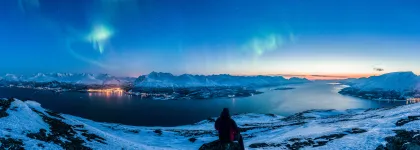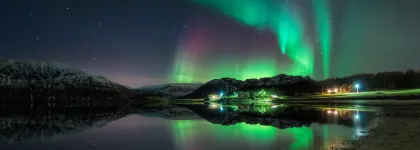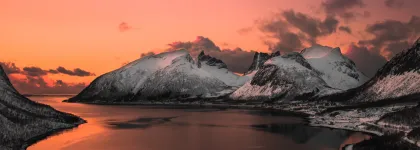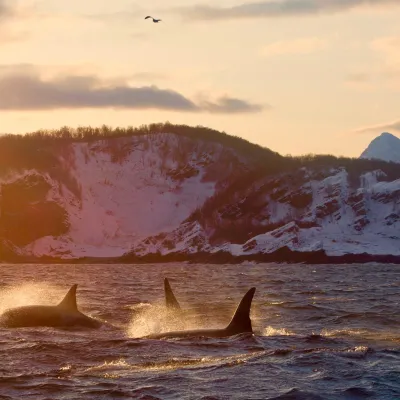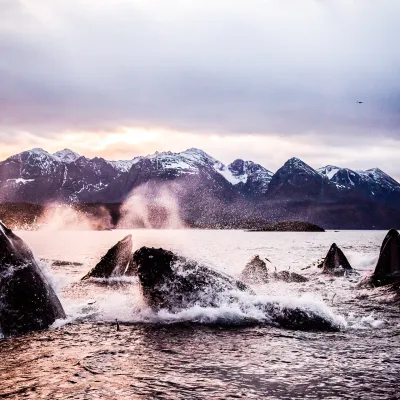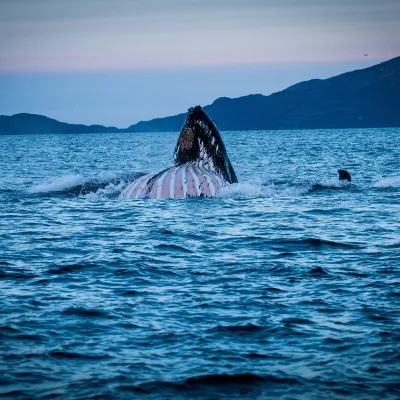Whales migrate from fjord to fjord following the herring
In recent years, there has been phenomenal activity of whales in the sea off Skjervøy. It all started in the winter of 2017 when herring migrated from the coast off Tromsø northwards towards the Lyngenfjord. The whales were not far behind in search of feast and, after that, they have been coming back to the area every year.
Amazing experience on a wildlife safari
Joanna from Italy is one of the many who have been on a whale watching safari off the coast of Skjervøy.
“It was completely amazing! I have never experienced anything like it before. It was unbelievable to see the whales swimming so close to us and to see how they moved in the sea. As soon as we returned to land, I just wanted to go out again,” she says just after returning from the whale watching safari.
The whales you can see in Northern Norway
Two whale species in particular have been observed off the coast of Skjervøy: humpback whales and orcas (killer whales). Learn more about whale behaviour here.
Orca
Orcas have strong family bonds and their groups often remain together for several generations. The orca has a black body with a large white patch above and behind the eye. The orca is the largest member of the oceanic dolphin family. The orca’s diet consists of fish (such as herring), seals, sharks and dolphins.
- The orca is the whale species with the largest dorsal fin. Male orcas can be up to 2 metres high. The average lifespan of female orcas is 50 years, but they can be up to 90 years old.
Humpback whales
Humpback whales can live alone or in small groups. The humpback whale is stocky and strong, has black dorsal colouring and (as the name suggests) an obvious hump on its back. It catches herring by opening and filling its mouth. It can catch an entire school with a single mouthful!The humpback whale is very acrobatic and is known for its spectacular jumps above the surface! The humpback whale also produces a unique and complex song.
- Did you know that female humpback whales are the largest? They can grow up to 19 m long and weigh 40 tonnes! The typical size is 12-14 metres and 25-30 tonnes! That’s huge!
Whale watching safaries, do not disturb the whales - policy
To avoid disturbing the whales while they are feeding, it’s important to maintain some distance. However, this won’t prevent you from seeing the whales. Jumping humpback whales and orcas that want to play are often more curious and swim closer to the boats.
See the guidelines for whale watching safaris.





